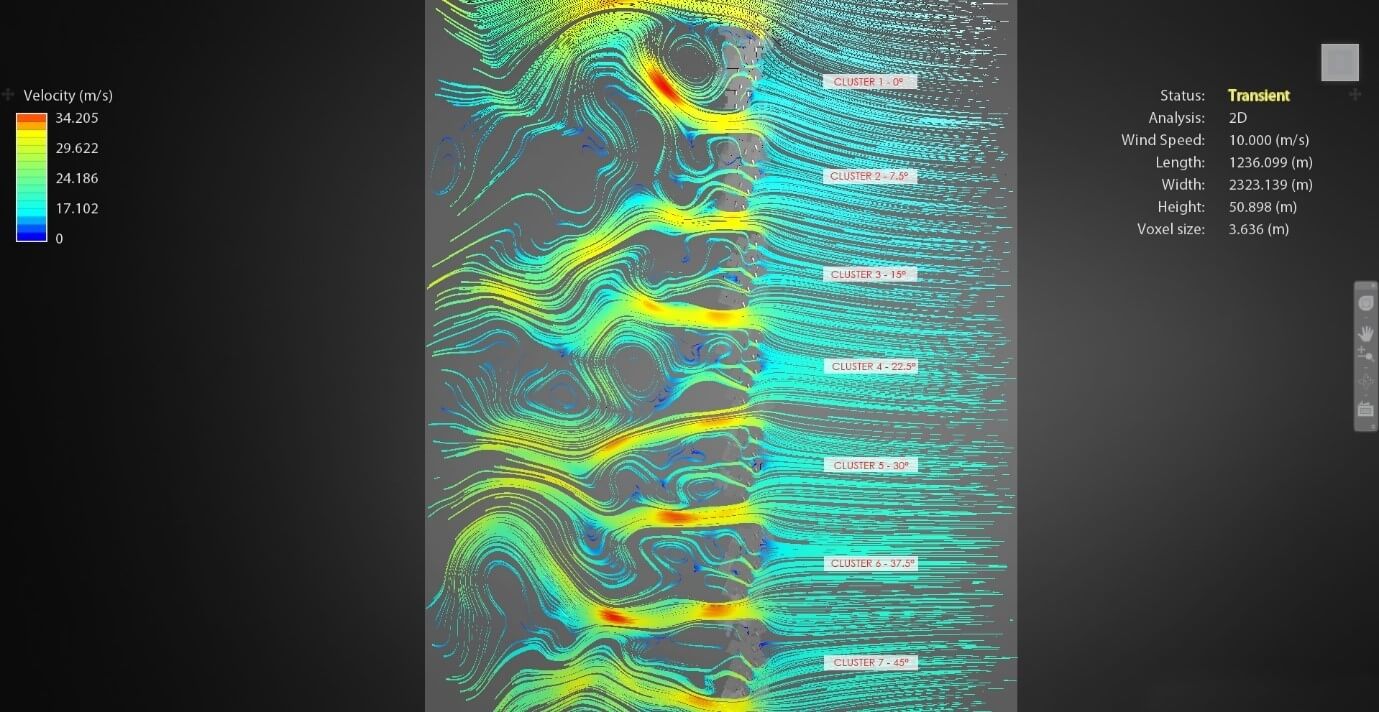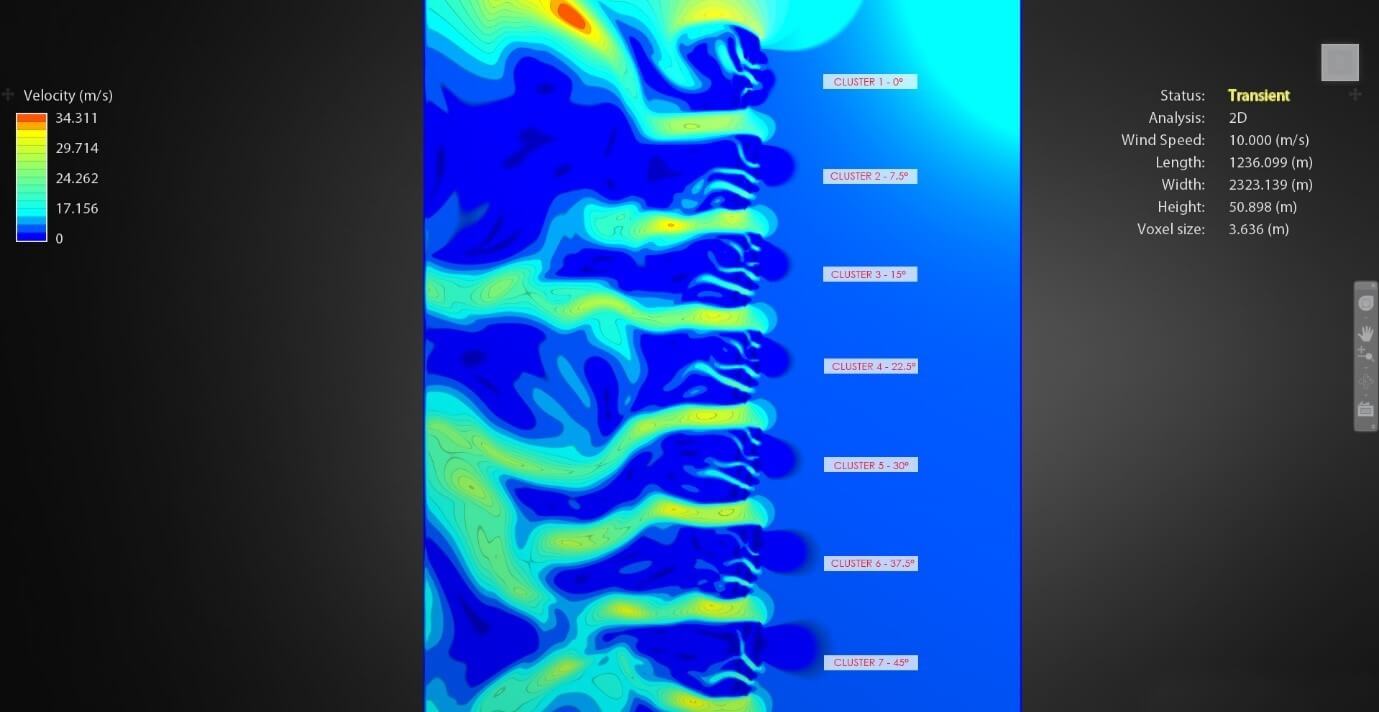Written by Anuranjan Singh, interning at FHD Group
As part of our design process, we believe it is important to actively look at how climate and weather patterns sculpt our built environments. At FHD, we are building advanced capabilities for analyzing exterior air movements around built environments.
We simulate wind flow (both direction & speed) and study the wind patterns to help determine wind distribution, ventilation, and air quality. By orienting the units to maximize wind distribution, we can help improve end-user comfort within & outside the units. With the aid of wind studies, it is possible to orient the buildings, trees, and landscaping to help improve the wind flow patterns.
Additionally, wind simulation studies are important and help 1) create appropriately sheltered outdoor spaces & courtyards, 2) reduce unwanted wind amplifications around the buildings and 3) create a comfortable experience at the pedestrian level.
Current Study at FHD Group: Wind Flow Analysis in Low-Rise Cluster Development
We are currently designing a low-rise development with 20 units in each cluster, 10 on either side of the street. To understand the optimal tilt/orientation of each unit within the cluster, we conducted the following study.
We arranged a set of typical clusters with varying tilt angles of the units, starting from 0° to 45° at intervals of 7.5°. We then arranged all clusters linearly for relative comparison. Using Autodesk Flow, we’ve simulated wind flow through the clusters. Wind flow data is based on location-specific wind patterns & speeds.

The 1st image shows the wind simulation and behavior of the clusters.

2nd image shows the shaded contour plot of wind speeds.
To help understand better, imagine the cluster as a dam with water flowing (from the right of the image), each unit in the cluster acting as a barrier to it, with the distribution of water flowing through them (on the left of the image). 1st image is the actual movement of wind and the 2nd image is wind contours of the same. Results and inferences of better wind distribution can be observed in the 2nd diagram and are listed below.
Starting from the top of image 2, we see that
- 1st cluster, with 0° tilt, has 2 major wind channels and several blind spots (where wind flow is nil), indicating the absence of cross-ventilation in that cluster orientation.
- 2nd cluster, with 7.5° tilt, we see 3 wind channels and very little blind spots, indicating better wind distribution and improve ventilation.
- From 3rd cluster (with 15° tilt) onwards, we see 4 channels and multiple blind spots and so on and so forth.
- As we reach the last cluster with a 45° tilt, we observe that the number of channels reduce again and is similar to the 1st cluster.
From the above, we can infer that a 7.5° tilt of units leads lead to better wind distribution within the cluster, better ventilation and significantly improves user comfort. We will publish the conclusion of this research in the following weeks. Stay tuned!
At FHD Group, we are continuing to research and offer climate-focused design solutions for our clients. We will be issuing periodic insights on the same. If you’d like to know how we can provide similar strategic design solutions to your projects, email us at reachus@fhdgroup.in

